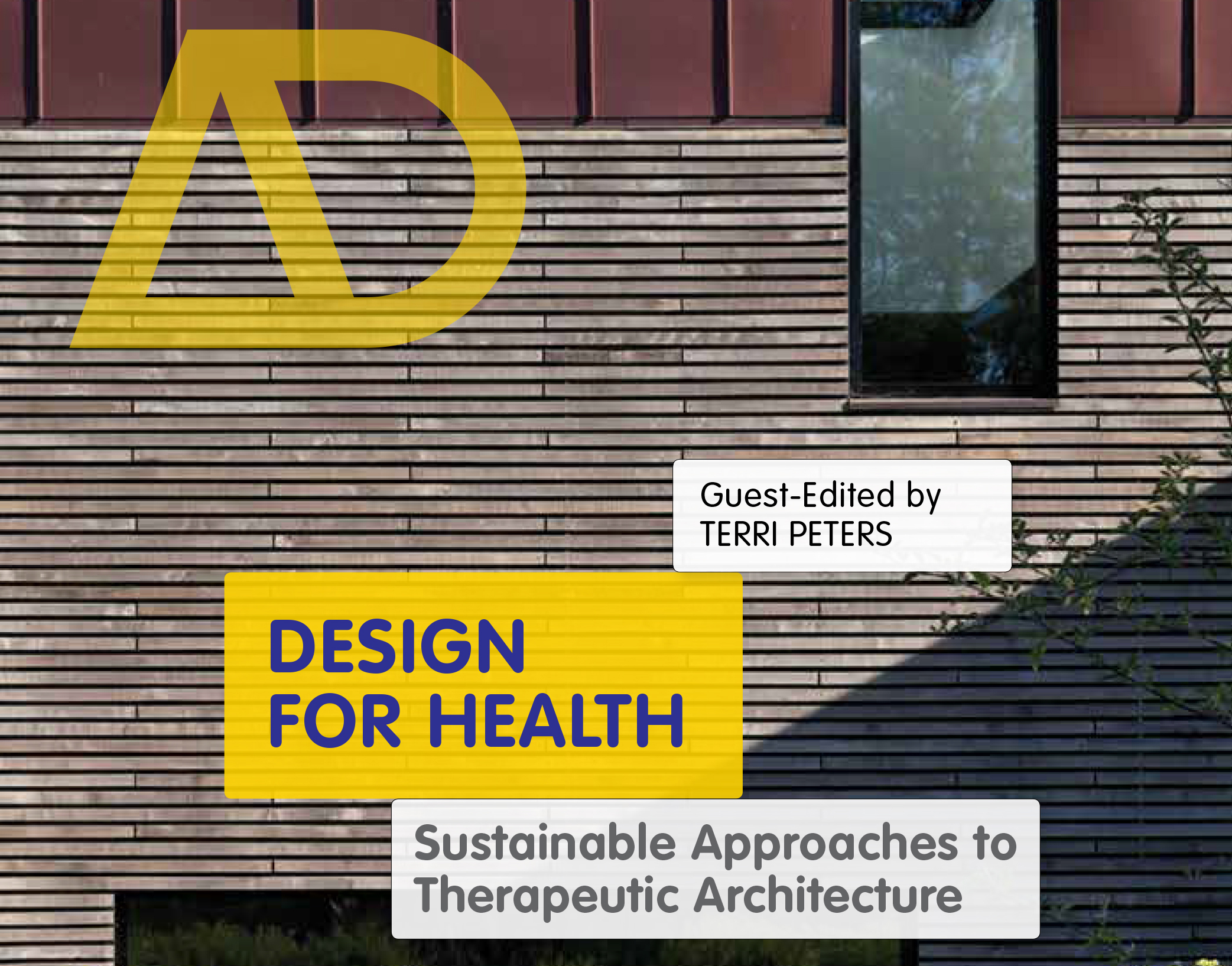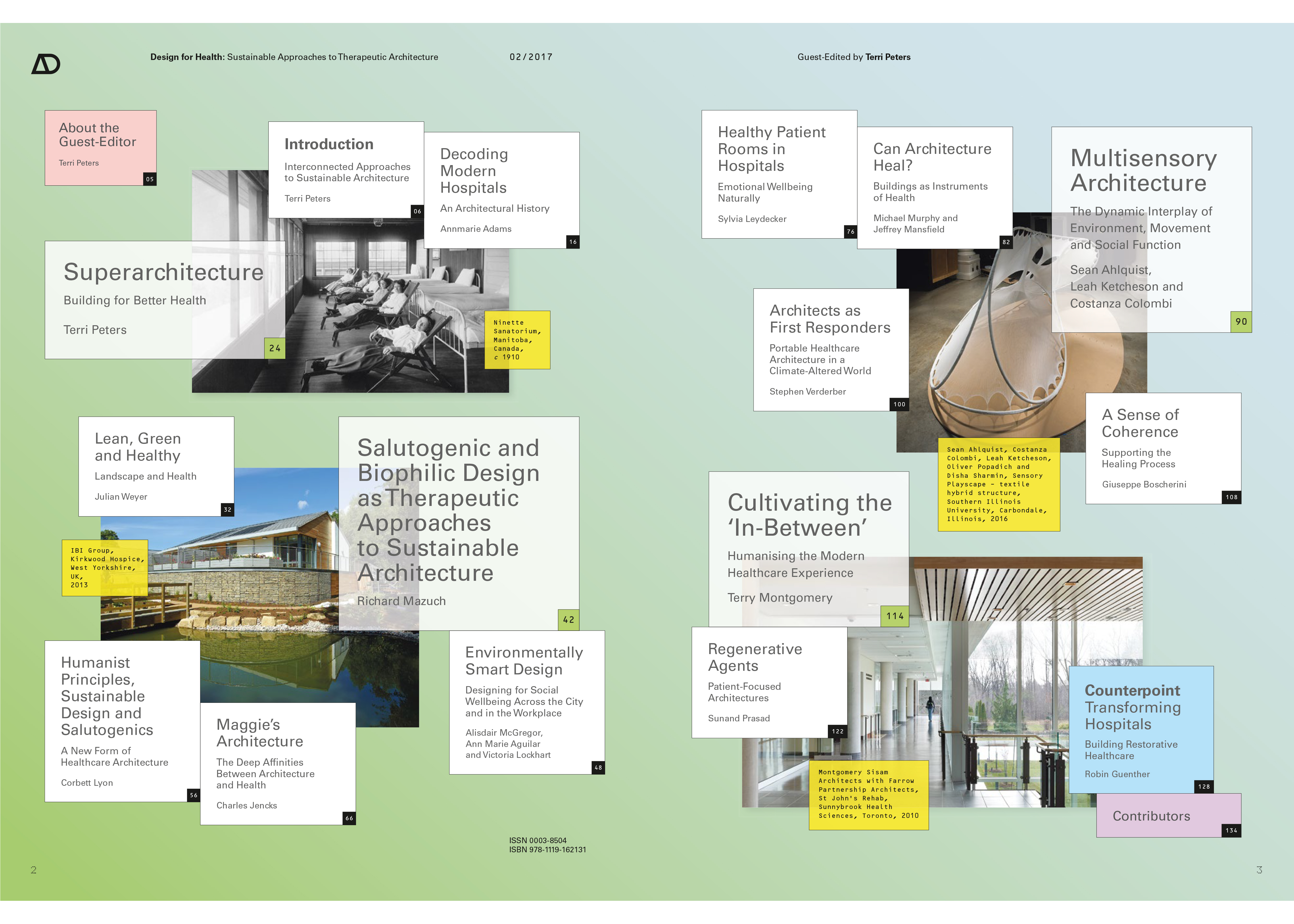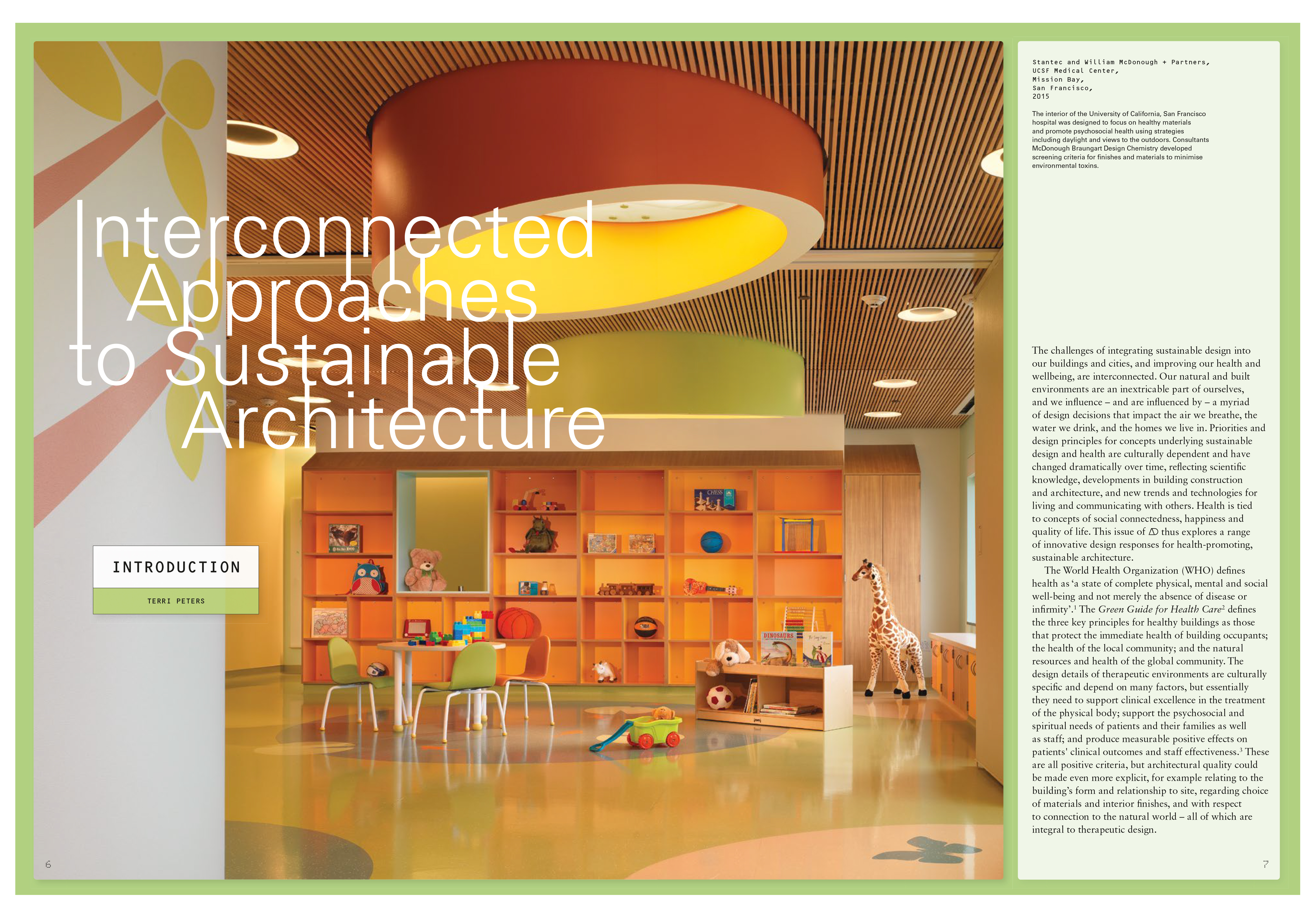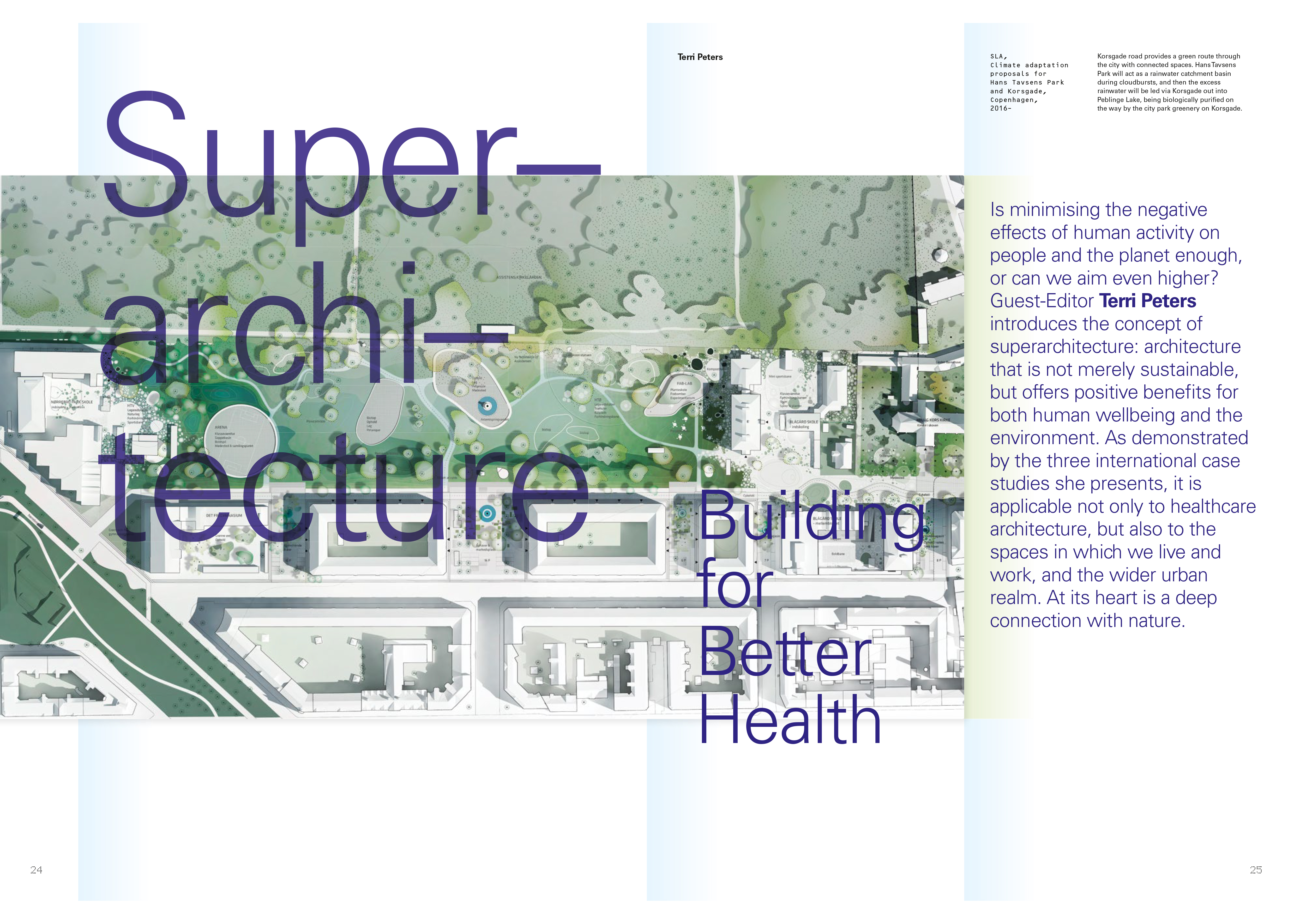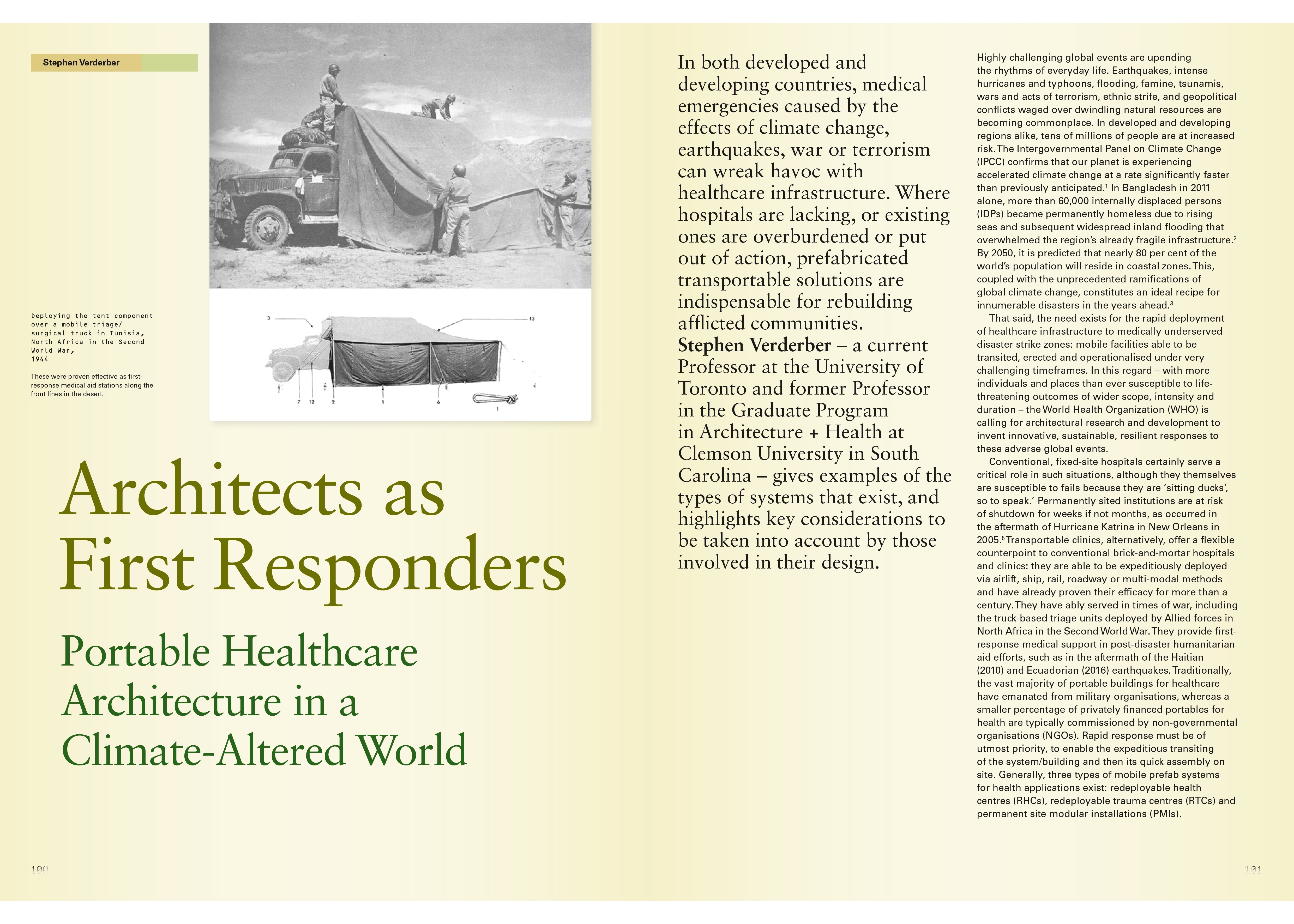07.03.17 - Terri Peters explores Design for Health as guest editor of AD Magazine
Daniels Faculty Lecturer and Post-Doctoral Fellow Terri Peters edited the recent issue of Architectural Design (AD) Magazine (Volume 87, Issue 2), titled “Design for Health: Sustainable Approaches to Therapeutic Architecture.”
Each issue of AD has a different theme and invited guest-editor, who is an international expert in their field. A Canadian architect, writer and researcher, Peters investigates the architectural and human dimensions of sustainable buildings. People, our connections to our environment, comfort, and experience are central to her work, which seeks to bridge technology and design culture at multiple scales.
Peters wrote two essays in the March/April issue: “Interconnected Approaches to Sustainable Architecture” and “Superarchitecture: Building For Better Health.” Both are based on her post-doctoral research at the Daniels Faculty.
In “Superarchitecture: Building For Better Health,” Peters references new sustainable projects that benefit human wellbeing and the environment. Her numerous examples include climate adaptation proposals in Copenhagen, Denmark by the architecture firm SLA, and the new Active House, in Toronto, Canada, designed by Daniels Faculty Lecturer Meg Graham of Superkül.
Writes Peters:
In the future, with increased focus on cities, resources, public health and shifting demographics, there will be a great need for Superarchitecture, for green/health infrastructure and building strategies that work at multiple scales, as multifunctional strategies for our physical environment and improving health. The examples of this new green typology are identified here based on their design intentions to impact a myriad of wellbeing and ecological systems. The three examples discussed in this essay are not healthcare facilities, but there are clear implications for care environments. They offer demonstrations of process-driven approaches to connecting to neighbourhood-scale climate-change adaptation in cities; net zero energy and water in office buildings to contribute to worker productivity and wellness; reconsidering the design of residences using digital simulation to achieve ambitious daylight factor levels; and utilising new building control technologies to offer more therapeutic and comfortable spaces for living.
Other essays in the book include “Architects as First Responders,” by Professor Stephen Verderber, who examines portable health care architecture in the context of climate change — a extension of his recent book Innovations in Transportable Healthcare Architecture (Routledge 2015). Verderber, whose core specialty is architecture, design therapeutics, and health, is cross-appointed at both U of T’s Daniels Faculty ad the Dalla Lana School of Public Health — an interdisciplinary appointment that is unique in North America.
Terry Montgomery (BArch 1969) of Toronto firm Montgomery Sisam wrote the essay “Cultivating the In-Between: Humanizing the Modern Healthcare Experience,” in which he argues that non clinical spaces like the porch, the courtyard, and the gallery can be healing spaces that greatly impact the experience of healthcare environments.
For more information on the journal and how to subscribe, visit AD’s website. AD can also be accessed through U of T’s library. Hard copies of this issue will be available in late March.


